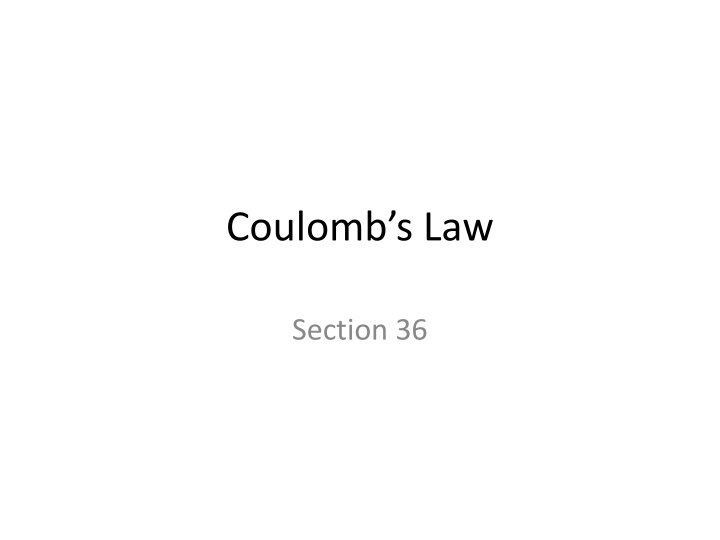
Understanding Coulomb's Law and Electrostatic Fields
Explore Coulomb's Law, Poisson's Equations, Laplace's Equations, Scalar Potentials, Point Charges, and more in the field of electrostatics. Learn about the relationship between electric fields, potentials, charge distributions, and the principles governing electrostatic interactions.
Download Presentation

Please find below an Image/Link to download the presentation.
The content on the website is provided AS IS for your information and personal use only. It may not be sold, licensed, or shared on other websites without obtaining consent from the author. If you encounter any issues during the download, it is possible that the publisher has removed the file from their server.
You are allowed to download the files provided on this website for personal or commercial use, subject to the condition that they are used lawfully. All files are the property of their respective owners.
The content on the website is provided AS IS for your information and personal use only. It may not be sold, licensed, or shared on other websites without obtaining consent from the author.
E N D
Presentation Transcript
Coulombs Law Section 36
Electrostatic field Poisson s equation
In vacuum, = 0. Then Poisson s equation becomes Laplace s equation
Theorem: Scalar potential cannot have an extremum in vacuum. Proof: Suppose has an extreme value somewhere Then 0 at that point All have the same sign AND But that violates
Point charge. Field is spherically symmetric. No or dependence. E is oriented along a radius vector from the point charge. E = E(R) is a function only of the distance R from the charge. Coulomb s law Inversely proportional to the square of the distance from the charge.
System of charges Superposition principle: E-field at a field point is the vector sum of the fields form all charges Potential at field point is sum of potentials from all charges
Continuous charge distribution Field point = charge density
Point charge Poisson s equation
